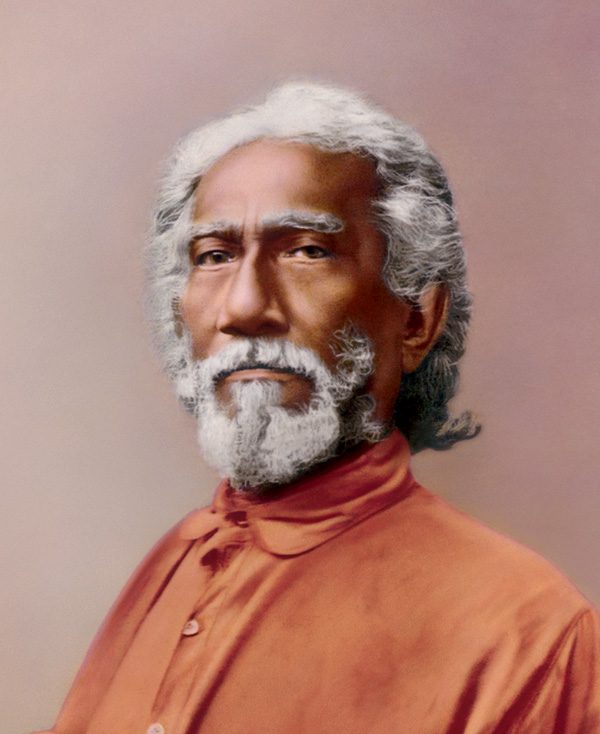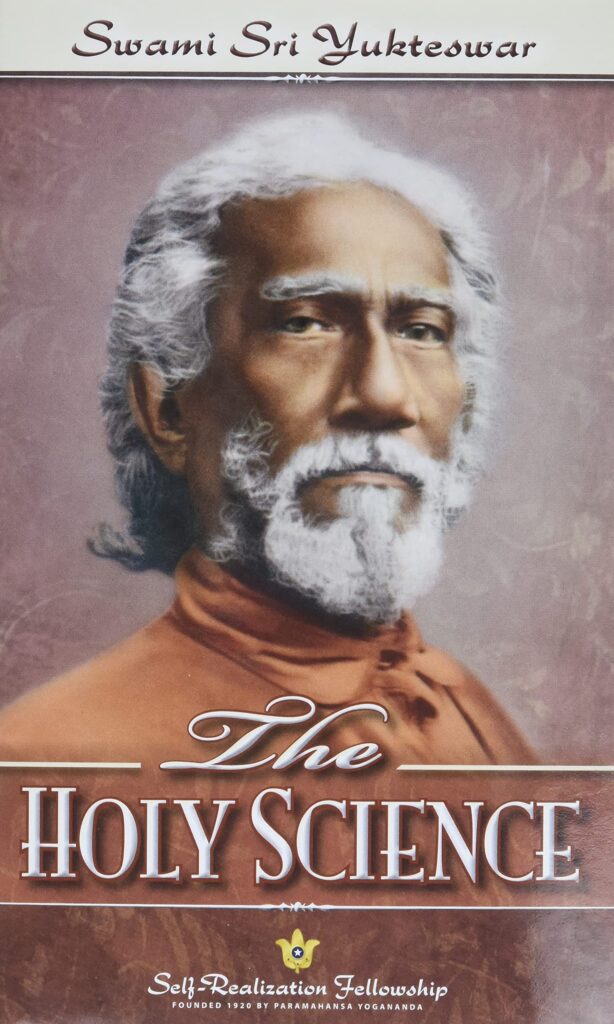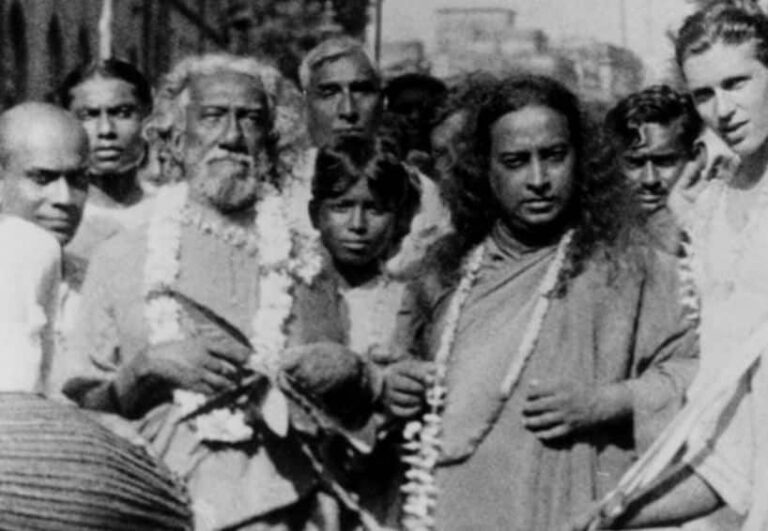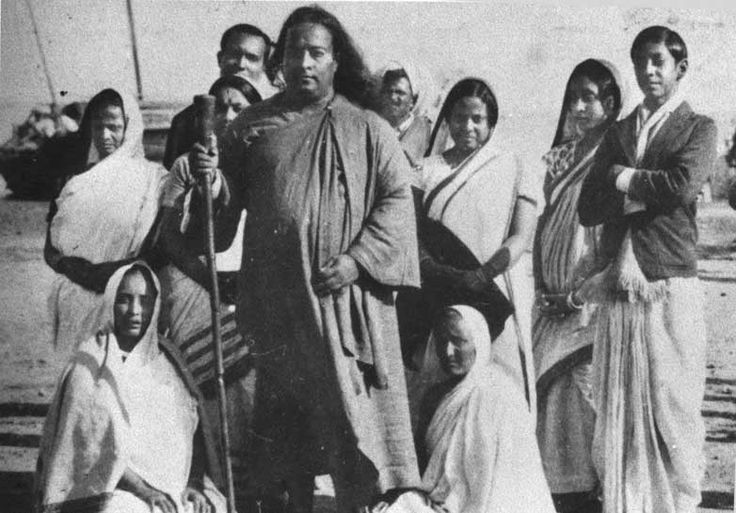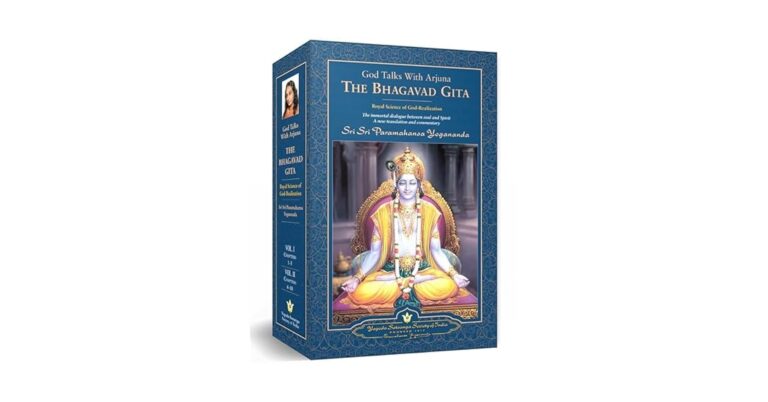THE HOLY SCIENCE Review: Bridges Christianity & Hinduism
“The Holy Science” by Swami Sri Yukteswar stands as one of the most profound spiritual treatises ever written, bridging the gap between Eastern and Western religious traditions with unprecedented clarity and wisdom. Originally published in 1894 under the title “Kaivalya Darsanam,” this extraordinary work was written at the specific request of Mahavatar Babaji and has continued to inspire spiritual seekers worldwide for over a century.
As the revered guru of Paramahansa Yogananda, Swami Sri Yukteswar brought to this work not only his deep scriptural knowledge but also his direct spiritual realization, creating a masterpiece that demonstrates the fundamental unity underlying all great religions. This comprehensive review explores the book’s structure, key teachings, practical applications, and enduring relevance for modern spiritual seekers.
Historical Background and Genesis
The origin of “The Holy Science” is deeply rooted in divine inspiration and spiritual necessity. Sri Yukteswar states that he wrote The Holy Science at the request of Mahavatar Babaji, following their historic meeting in 1894. During this encounter, Mahavatar Babaji specifically requested Sri Yukteswar to write “a short book on the underlying harmony between Christian and Hindu scriptures,” recognizing that “their basic unity is now obscured by men’s sectarian differences.”
This divine commission came at a crucial time in world history when the barriers between East and West were beginning to dissolve, yet religious understanding remained fragmented by cultural and linguistic differences. Sri Yukteswar’s unique qualifications for this task included his mastery of both Sanskrit and modern sciences, his deep realization of spiritual truths, and his prophetic understanding of the need for religious unity in the approaching age.
The book’s original Sanskrit title, “Kaivalya Darsanam,” translates to “The Vision of Absolute Unity,” perfectly encapsulating its central theme. The English version, “The Holy Science,” emphasizes the scientific approach that Sri Yukteswar brought to spiritual understanding, treating divine truths as verifiable principles rather than matters of blind faith.
Book Structure and Organization
“The Holy Science” is meticulously organized into four main sections, each building upon the previous to create a comprehensive understanding of spiritual evolution and religious unity. The book’s concise yet profound format reflects Sri Yukteswar’s ability to distill complex spiritual concepts into clear, accessible principles.
Section I: The Gospel of Truth
The opening section establishes the fundamental premise that there is an essential unity in all religions; that there is no difference in the truths inculcated by the various faiths. Sri Yukteswar begins by examining the nature of the Absolute and its relationship to creation, drawing parallel passages from both Hindu scriptures and the Bible to demonstrate their shared understanding of divine truth.
This section introduces readers to the concept of the “Word” or “Om” as the primordial sound from which all creation emerges, showing how this principle appears in both Christian and Vedantic teachings. Sri Yukteswar’s approach is scholarly yet devotional, presenting evidence while inspiring reverence for the truths revealed.
Section II: The Goal of Human Life
The second section explores the ultimate purpose of human existence across different religious traditions. Sri Yukteswar demonstrates how both Eastern and Western scriptures point toward the same goal: the realization of one’s divine nature through union with God. This section delves into the various paths of spiritual development, including karma yoga (the path of action), bhakti yoga (the path of devotion), and jnana yoga (the path of knowledge).
Here, Sri Yukteswar’s genius shines as he shows how these seemingly different approaches are actually complementary aspects of a single spiritual journey. He draws connections between Christian concepts of salvation and Hindu teachings on moksha (liberation), revealing their fundamental identity beneath superficial differences in terminology and cultural expression.
Section III: The Procedure for Self-Realization
This section provides practical guidance for spiritual seekers, outlining the systematic methods for achieving God-realization that are common to both traditions. Sri Yukteswar explains the importance of proper conduct, meditation, and surrender to divine will, showing how these practices are advocated in both the Bhagavad Gita and the teachings of Jesus Christ.
The emphasis here is on direct experience rather than mere theoretical knowledge. Sri Yukteswar presents spirituality as a science with definite laws and predictable results when practiced correctly. This scientific approach was revolutionary for its time and continues to resonate with modern seekers who desire rational approaches to spiritual development.
Section IV: The Revelation
The final section addresses the ultimate revelation that comes to those who have successfully followed the spiritual path. Sri Yukteswar describes the state of God-consciousness and its characteristics, again drawing from both traditions to show their agreement on the nature of enlightenment.
This section also includes his famous exposition on the yugas (cosmic ages), providing a unique perspective on the cyclical nature of time and civilization that differs from traditional Hindu interpretations. His more optimistic view of humanity’s spiritual evolution has proven prophetic, aligning with the increased spiritual awareness observed in the modern era.
Buy Now: https://amzn.to/42tLHd1
The Unity of All Religions
The central theme of “The Holy Science” is the fundamental unity underlying all genuine religious teachings. This extraordinary treatise explores parallel passages from the Bible and the Hindu scriptures to reveal the essential unity of all religions. Sri Yukteswar accomplishes this not through superficial comparisons but by penetrating to the core truths that all religions attempt to convey.
He demonstrates that the apparent differences between religions are primarily matters of language, culture, and historical context rather than fundamental disagreements about divine truth. This approach was groundbreaking in 1894 and remains revolutionary today, offering a blueprint for interfaith dialogue and understanding.
The book shows how concepts like the Trinity in Christianity correspond to the Hindu understanding of Sat-Chit-Ananda (Existence-Consciousness-Bliss), and how the Christian path of salvation mirrors the Hindu journey toward moksha. These parallels are not forced comparisons but natural correspondences that reveal the single source of all religious inspiration.
The Scientific Approach to Spirituality
One of the most distinctive aspects of “The Holy Science” is its presentation of spirituality as a precise science. Sri Yukteswar treats spiritual development as subject to natural laws that can be understood and applied systematically. This approach appeals to the rational mind while not diminishing the devotional heart.
He explains meditation techniques, ethical practices, and spiritual disciplines as methods with predictable results when properly applied. This scientific spirituality was ahead of its time and has proven particularly relevant in our current age, when many seekers desire to integrate rational inquiry with mystical experience.
The book demonstrates that faith and reason are not opposing forces but complementary aspects of complete understanding. Sri Yukteswar shows how the deepest spiritual truths can be approached through both intellectual comprehension and intuitive realization.
Cosmic Cycles and Spiritual Evolution
He also explains the vast recurring cycles of civilization (yugas), affording a profound understanding of history and the ever-changing panorama of turbulent world events. Sri Yukteswar’s interpretation of the yugas presents a more optimistic view than traditional Hindu astronomy, suggesting that humanity is ascending rather than descending in spiritual consciousness.
His yuga theory provides a framework for understanding historical changes and spiritual development both individually and collectively. This cosmic perspective helps readers see their personal spiritual journey within the larger context of universal evolution.
The book explains how these cosmic cycles affect human consciousness and spiritual capacity, offering insights into why certain spiritual teachings emerge at particular times in history. This understanding provides hope and direction for modern spiritual seekers who may feel overwhelmed by contemporary challenges.
The Path to God-Realization
“The Holy Science” outlines a clear path for spiritual seekers regardless of their religious background. Swami Sri Yukteswar, the revered guru of Paramahansa Yogananda, outlines the universal path that every human being must travel to enlightenment. This path includes ethical conduct, mental purification, meditation practice, and surrender to divine will.
The universality of this path is demonstrated through parallel teachings from various traditions, showing that sincere seekers in any religion can achieve the same ultimate goal. This inclusiveness makes the book valuable for people from diverse spiritual backgrounds.
Sri Yukteswar emphasizes that spiritual progress requires both personal effort and divine grace, showing how human endeavor and divine blessing work together in the journey toward realization. This balanced approach avoids both the extremes of self-effort without surrender and passive waiting without action.
Literary Style and Approach
Sri Yukteswar’s writing style in “The Holy Science” is characterized by precision, clarity, and profound depth. Despite dealing with the most complex spiritual and philosophical topics, he maintains a clear, accessible prose that serves both scholars and sincere spiritual seekers. His approach is simultaneously scholarly and devotional, intellectual and intuitive.
The book demonstrates his mastery of both Sanskrit and English, as he provides accurate translations and interpretations of complex scriptural passages. His linguistic precision ensures that subtle metaphysical concepts are conveyed without distortion or oversimplification.
Throughout the text, Sri Yukteswar maintains an tone of respectful authority, presenting profound truths with quiet confidence while acknowledging the limitations of verbal expression in conveying ultimate reality. His humility and wisdom shine through every page, inspiring trust and reverence in readers.
Practical Applications and Relevance
“The Holy Science” offers modern spiritual seekers a rational yet deeply spiritual approach to understanding and practicing religion. In an age when many people are seeking alternatives to dogmatic religious approaches, Sri Yukteswar’s scientific spirituality provides a refreshing perspective.
The book’s emphasis on direct experience makes it particularly relevant for contemporary seekers who want to verify spiritual truths for themselves rather than accepting them on authority alone. This experiential approach aligns with modern values of personal investigation and verification.
For those interested in meditation and yoga practices, the book provides theoretical foundations that enhance practical understanding. Sri Yukteswar’s explanations of consciousness, spiritual development, and divine realization offer context and meaning to various spiritual practices.
For Interfaith Understanding
In our increasingly interconnected world, “The Holy Science” serves as an invaluable resource for interfaith dialogue and understanding. Its demonstration of fundamental religious unity provides a foundation for respectful engagement between different traditions.
Religious leaders and scholars can find in this book a model for presenting their own traditions in ways that honor other paths while maintaining the integrity of their specific teachings. The book shows how to appreciate diversity while recognizing underlying unity.
For individuals from mixed religious backgrounds or those exploring different traditions, “The Holy Science” offers a framework for understanding how various paths can complement rather than contradict each other.
For Academic Study
The book serves as an important text for comparative religion courses, providing scholarly insights into both Hindu and Christian traditions. Sri Yukteswar’s careful analysis of scriptural passages offers valuable material for academic research and discussion.
Philosophy students can benefit from the book’s treatment of consciousness, reality, and spiritual evolution. The systematic approach to metaphysical questions provides a foundation for deeper philosophical inquiry.
History students interested in the development of East-West spiritual exchange will find “The Holy Science” to be a pivotal document in the transmission of Eastern wisdom to Western audiences.
Strengths of the Work
“The Holy Science” demonstrates remarkable strengths that have contributed to its enduring influence. The book’s primary strength lies in its authentic spiritual authority—Sri Yukteswar writes not as a mere scholar but as one who has realized the truths he describes. This experiential foundation gives weight and credibility to his comparisons and interpretations.
The systematic approach to demonstrating religious unity is another significant strength. Rather than making superficial comparisons, Sri Yukteswar penetrates to the essential principles underlying different religious expressions. His scholarly methodology, combined with spiritual insight, creates compelling evidence for his central thesis.
The book’s accessibility despite its profound subject matter represents a masterful achievement in spiritual writing. Sri Yukteswar succeeds in making complex metaphysical concepts understandable without oversimplifying or distorting them.
Areas of Challenge
Some readers may find certain sections of “The Holy Science” challenging due to its dense philosophical content and its assumption of familiarity with both Hindu and Christian scriptures. The book requires careful study rather than casual reading to fully appreciate its insights.
The cosmic cycle theory presented in the book, while fascinating, represents Sri Yukteswar’s unique interpretation that differs from traditional Hindu astronomy. Some scholars have questioned certain aspects of this theory, though many appreciate its optimistic perspective on human spiritual evolution.
Modern readers might also find some of the language and conceptual frameworks dated, as the book was written over a century ago. However, the core insights remain timelessly relevant and continue to inspire new generations of seekers.
Impact on Spiritual Literature
“The Holy Science” has significantly influenced subsequent spiritual literature, particularly works focusing on the unity of religions and the scientific approach to spirituality. Many later authors have drawn inspiration from Sri Yukteswar’s methodology and insights.
The book’s impact extends beyond literature to practical spiritual movements and organizations. The Self-Realization Fellowship, founded by Paramahansa Yogananda based on his guru’s teachings, has disseminated the book’s principles worldwide.
Contemporary interfaith organizations and movements for religious understanding often cite “The Holy Science” as a foundational text demonstrating the possibility of unity amid diversity.
Comparison with Contemporary Works
When “The Holy Science” was first published in 1894, few works attempted such a systematic comparison of Eastern and Western religious traditions. The book was pioneering in its approach and remains unique in its combination of scholarly rigor and spiritual authority.
Compared to other comparative religion texts of its era, “The Holy Science” stands out for its insider’s perspective on both traditions being compared. Sri Yukteswar writes not as an external observer but as one deeply versed in the spiritual practices and realizations of both paths.
Modern works on religious unity often lack the depth of spiritual realization that characterizes Sri Yukteswar’s approach. While contemporary scholarship may be more extensive in its research, few authors combine academic knowledge with the direct spiritual experience that gives “The Holy Science” its unique authority.
Practical Guide for Reading
Approaching the Text
New readers should approach “The Holy Science” with patience and openness, understanding that it requires careful study rather than quick reading. The book rewards multiple readings, as each encounter reveals new depths of meaning and understanding.
It is helpful to have basic familiarity with both Christian and Hindu concepts before reading, though Sri Yukteswar provides sufficient explanation for sincere seekers regardless of background. A dictionary of spiritual terms can be useful for understanding technical vocabulary.
The book is best read in a meditative, contemplative mood rather than as mere intellectual exercise. Sri Yukteswar intended the work to inspire spiritual realization, not just intellectual understanding.
Study Methods
Many readers find it beneficial to study “The Holy Science” with others, as group discussion can illumine different aspects of its teachings. Study groups focused on the book have formed in various countries, creating communities of seekers exploring its principles together.
Keeping a journal while reading can help track insights and questions that arise during study. The book often sparks deep contemplation about spiritual matters that benefit from written reflection.
Combining study of the book with meditation practice enhances understanding and allows readers to verify Sri Yukteswar’s teachings through personal experience. This experiential approach aligns with the book’s emphasis on direct realization.
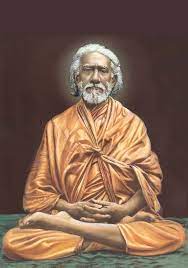
Integration with Spiritual Practice
“The Holy Science” serves not only as a theoretical text but as a guide for practical spiritual development. Readers can apply its principles to their meditation practice, ethical conduct, and devotional life regardless of their specific religious tradition.
The book’s teachings on unity can transform one’s relationship with people of different faiths, fostering greater understanding and compassion. This practical application of the book’s wisdom creates positive changes in daily life.
For those following specific spiritual practices, “The Holy Science” provides context and deeper understanding that can enhance and deepen their existing commitments rather than replacing them.
Contemporary Relevance and Modern Applications
In today’s fragmented religious landscape, “The Holy Science” offers timely wisdom for those seeking authentic spirituality beyond sectarian divisions. The book’s emphasis on universal truths appeals to spiritual seekers who feel alienated by narrow religious interpretations.
The scientific approach to spirituality resonates with contemporary minds trained in rational inquiry. Sri Yukteswar’s methodology provides a bridge between the empirical mindset of modern culture and the perennial wisdom of spiritual traditions.
For those interested in meditation, yoga, and contemplative practices, the book provides theoretical foundations that enhance practical understanding and motivation. It shows how these practices relate to the broader goals of spiritual development.
Global Impact and Cultural Bridge
“The Holy Science” continues to serve as a cultural bridge between East and West, helping Western readers understand Eastern spiritual concepts while showing Eastern readers the spiritual depths of Christianity. This cross-cultural understanding becomes increasingly important in our globalized world.
The book has been translated into numerous languages and continues to find new audiences worldwide. Its message of unity amid diversity speaks to universal human aspirations for peace and understanding.
International spiritual organizations and movements for world peace often reference “The Holy Science” as supporting their missions. The book provides philosophical foundations for efforts to create greater harmony among different religious communities.
Educational and Institutional Applications
Many universities include “The Holy Science” in their comparative religion and philosophy curricula. The book serves as an excellent example of how spiritual traditions can be studied with both academic rigor and devotional respect.
Seminaries and religious training institutions use the book to help future religious leaders understand other traditions and develop more inclusive approaches to ministry. This application supports the growth of interfaith cooperation among religious professionals.
Meditation centers and spiritual retreat facilities often include study of “The Holy Science” in their programs, recognizing its value for deepening practitioners’ understanding of their spiritual journey.
Suggested Practices for the Serious Seeker
- Begin a daily meditation or Kriya Yoga practice to directly experience the spiritual truths Sri Yukteswar describes.
- Read The Holy Science contemplatively – approach each section as sacred study rather than casual reading.
- Practice religious inclusivity – look for the underlying unity in different faiths you encounter.
- Keep a spiritual journal while studying to track insights and personal revelations.
- Seek guidance from SRF monks to clarify doubts and deepen your understanding of the book’s profound teachings.
“The Holy Science” by Swami Sri Yukteswar stands as a monumental achievement in spiritual literature, successfully bridging the gap between Eastern and Western religious traditions through profound wisdom and scholarly precision. The object of this book is to point out the harmony underlying the various religions, and to help in binding them together, and in this objective, Sri Yukteswar has succeeded magnificently.
The book’s enduring relevance lies not only in its demonstration of religious unity but in its practical guidance for spiritual seekers of all backgrounds. By presenting spirituality as a science with verifiable principles and predictable results, Sri Yukteswar created a work that speaks to both the rational mind and the devotional heart.
For contemporary readers, “The Holy Science” offers several invaluable gifts: a framework for understanding different spiritual traditions, practical guidance for spiritual development, and hope for a more unified and harmonious world. The book shows that diversity and unity are not contradictory but complementary aspects of a complete understanding.
As we face increasing global challenges that require cooperation across cultural and religious boundaries, Sri Yukteswar’s vision of underlying unity becomes not just spiritually inspiring but practically essential. “The Holy Science” provides both the philosophical foundation and the practical wisdom needed to build bridges of understanding in our interconnected world.
The book remains as relevant today as when it was first written, perhaps even more so. In an age of information overload and spiritual confusion, Sri Yukteswar’s clear, authoritative voice offers guidance rooted in both deep realization and compassionate understanding. “The Holy Science” continues to serve as a beacon of wisdom for all who seek to understand the deeper truths underlying human religious experience.
Whether approached as a scholarly text, a practical guide for spiritual development, or a source of inspiration for greater religious understanding, “The Holy Science” rewards serious study with insights that can transform one’s spiritual life and worldview. It stands as a testament to the possibility of unity amid diversity and continues to inspire new generations of seekers on their journey toward truth, love, and divine realization.
